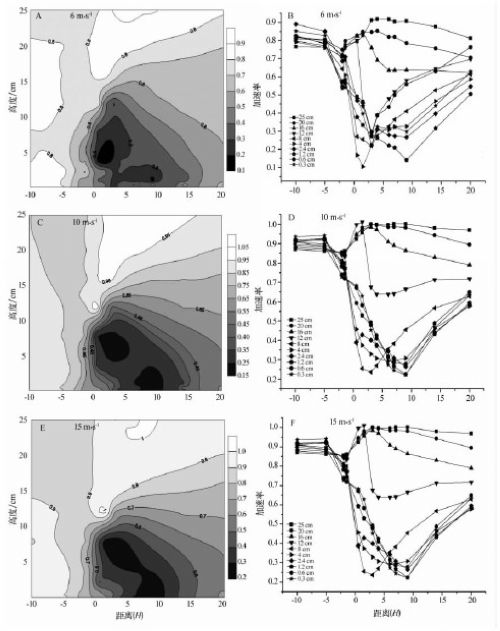Wind velocity, porosity and height of shelter belt exert a profound influence on airflow around the shelter belt, and the speed of airflow flowing through shelter belt will increase or decrease. The peripheral wind field around shelter belt could be divided into three parts according to wind rate change: slightly decelerating zone, significantly decelerating zone and transition zone. In wind tunnel experiment, we selected 10 groups of physical models with different porosity and height instead of realistic shelter belts; experimental data were automatically recorded. Based on the experimental data, isolines and variation trend curves of wind accelerating rate were obtained, with which the effective protective distance of shelter belt was calculated. The research has revealed the response law of accelerating rate, windbreak effect and effective protective distance to the wind speed, the porosity and the height of the shelter belts.

The isolines and variation trend curves of accelerating rate of shelter belts at different wind speeds |

